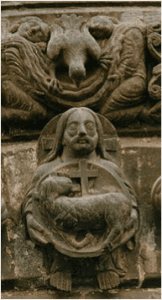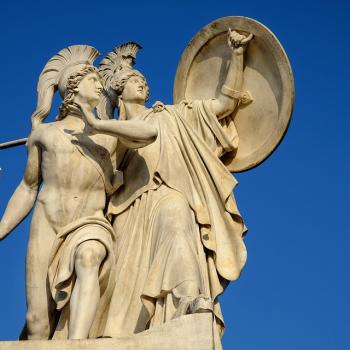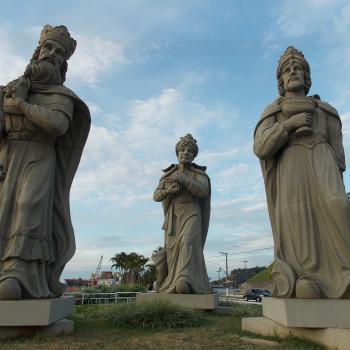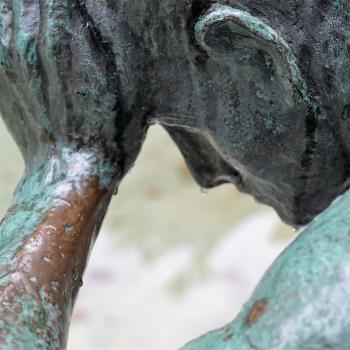Trinitarian spirituality? What does that mean? And this? What does this mean?
“The Trinity is the space in which Christian life takes place.”
Of course, we’re all for the Trinity. Whatever that means. We get a sermon on it once a year (in the Anglican tradition), on Trinity Sunday (which falls on 3 June this year). Most of these sermons gently and respectfully work their way around actual teaching about the Trinity—as though it were some kind of large object in the road—and move on to a topic more accessible to sermonizing. We’re left with our Sunday School images: three-leaf shamrock, water-ice-steam, family roles (e.g., I am a daughter, wife, and mother all at the same time), heat-flame-light, etc.
The dearth of good teaching and preaching on the Trinity has left its mark on the Church. One Christian blogger reports that, in his Sunday adult ed class, he asked how many believed that Jesus was God. Only a handful raised their hands. This is a Trinitarian problem.
The influence of Unitarianism on American Christianity is much stronger than we might imagine. I’ve been to one Episcopal Church that didn’t say the Creed because, well, it was offensive to the Unitarians in the congregation.
I’ve been spending Lent working my way through a dense book on the historical tussles behind the shaping of the Nicene Creed: Retrieving Nicaea: The Development and Meaning of Trinitarian Doctrine by Khaled Anatolios (Grand Rapids, MI: Baker Academic, 2011). I freely confess that it is taxing every puny cell in my brain.
And yet … and yet, there are shining moments when the author pulls me into his vision and I feel like I’m on a precipice before a panorama that sucks the air out of my lungs and makes me gasp with joy.
The Trinity is not an obscure theological development that has no real import in the life of a Christian. Its utter incomprehensibility does not mean utter meaninglessness. It is, as Anatolios writes, “the space in which Christian life takes place.”
So, I’m taking this Lenten discipline just a step further and turning it into an Easter travelogue. It seems appropriate—one of the older traditions of the Church was to use the weeks after Easter as a time to study “the mysteries” with the newly baptized who were now in a place to learn the deeper, more glorious truths of Christian faith. In this spirit, I’m going to write a series of posts here that takes Anatolios’ book one chunk at a time and try to tell you what I’m hearing him say. I dare say this is like a making a recipe from a cookbook—the finished product will not look like the picture. But you’ve been warned.
I’ll try to draw as well on some of the other Trinitarian books I have lying around here. God for Us by Catherine LaCugna has been one of my favorites (though, as we shall see, Anatolios has some issues with LaCugna’s approach.)
I’m writing this first for myself. I need to express the wonder of what I’m reading; I want to live in the Trinity, and this is helping me. But this is also for you friends, who have indulged my occasional rambling and might want to tackle something big; it is for you, my students and former students, who might want to make this Easter pilgrimage with me; it is for you, Papa, and I’m counting on you to rein me back in if I go crazy; it is for you, preachers and teachers, who might actually someday want to teach on the Trinity and find this inspirational if not formative. All citations, unless otherwise indicated, are from Anatolios’ book.
I’ll begin at the beginning.
[Note: I encourage you to “subscribe” to this so that the stream of entries, if you wish them, comes to you automatically. The subscription function didn’t use to work properly, but now it does. And you can always unsubscribe when you get weary of my words.]
[Another note: I welcome comments and engagement, or resistance and disagreement. Just practice Christian courtesy.]













